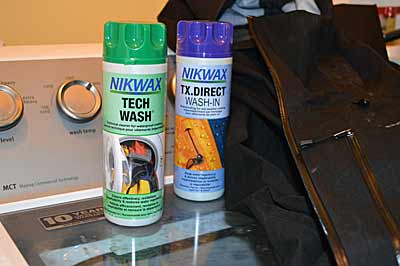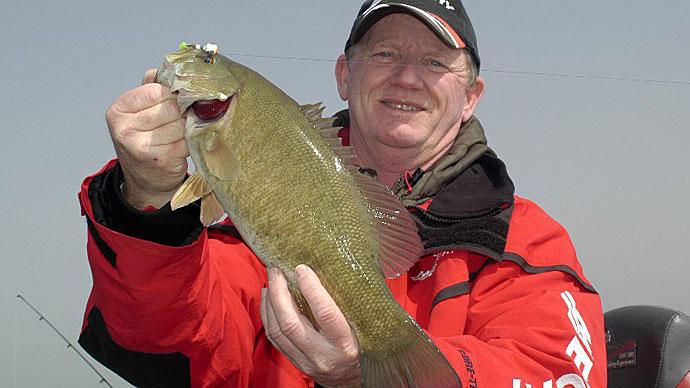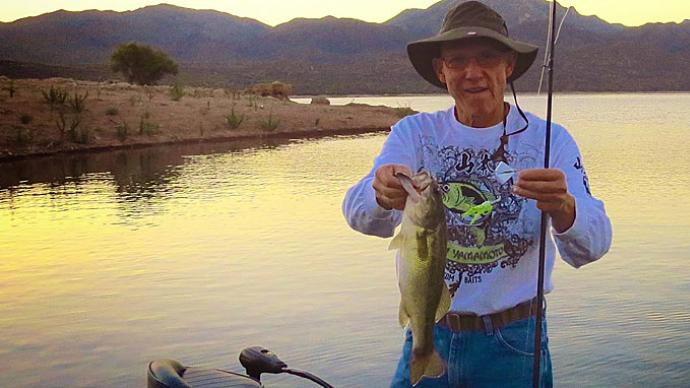
Cold and rainy days make most people want to stay home, where it’s warm and dry. But bass anglers aren’t most people.
Whether it’s chasing a hot bite or making the most of limited days off from work, there’s little that Mother Nature can conjure to keep bass anglers off the water. Whether it’s rain, wind, or even snow, they’re going fishing, and foul-weather — or rain — gear is the key to doing that comfortably.
Bass anglers use foul-weather gear for more than staying dry. On sunny days, for example, it keeps them warm when the air is cold and protects them from spray during bouncy boat rides. But to enjoy all that performance, you need to find the best set.
If you’re shopping for foul-weather gear, take time to find a set that fits you well. It should be roomy enough for insulation to be worn on cold days but not so baggy that it’s a flappy hassle in warm weather. You’ll find that fit in many of the quality brands available today. But that’s just the start.
New foul-weather gear is an expense that you don’t want to make repeatedly. So, shop smart and enjoy it through many years of use. The key to reviewing characteristics that cut across brands making the best matches to your needs. Here are five things to consider.
Material
Foul-weather gear is made from many materials. There’s nylon, which is used in the least expensive versions. It’s lightweight, durable, and a good option for anglers who don’t often fish or want a second set as an emergency backup. At the other end is neoprene, which will keep you toasty and last for years.
Most bass anglers are best served by a breathable material such as Gore-Tex. It keeps the weather from getting in but allows moisture and heat to escape, keeping the wearer dry and comfortable. Foul-weather gear sewn from it costs a bit more upfront, but its performance pays off in the long run.
Regardless of the type of material, ensure its seams are taped for extra wet-weather protection. And pay attention to how it’s described. “Packable” is almost always attached to lightweight gear and can be folded into a small bundle. While it will save the day in a pinch, it won’t stand up to frequent fishing. Instead, seek out gear that’s labeled as two or three layers. It lasts longer under regular use and provides better protection in a wide range of temperatures.
Jacket
Foul-weather gear can be purchased as a set — jacket and pants — or as individual pieces. Either way, make sure the jacket fits you and your needs.

Consider the jacket’s length. Short ones allow easy movement. Longer ones provide more coverage, an important consideration when you sit down. Long jackets also keep rain and wind from getting in your gear when you bend over to pull the trolling motor, adjust your electronics or dig out a different lure.
Details make the jacket. Look for closures around the wrists — hook and loop seals better than elastic — and a way to draw close its bottom. Some have a drawstring around the middle, helping rein in the extra fabric when the temperature is warm and you wear less insulation.
Don’t worry about a jacket’s pockets. You probably will never use any accessible from the outside, though an internal one can catch your smartphone or vehicle keys. But if it’s wet enough to wear foul-weather gear, those items are safer in dry storage.
Hood
The hood makes or breaks a jacket. It’s a lifesaver when you need it. But it can be in the way when you don’t. So, find one that offers plenty of protection but can hide out of the way.
Some hoods are lightweight. Minimally attached to the jacket, they roll discretely into the collar. While they’re fine for a pop-up shower while walking around town, a full rainy day of fishing demands something more substantial. Find one integrated into the jacket, forming a tall collar that covers up to your nose when the jacket is fully zipped. It should be roomy enough to fit over your hat comfortably.
The hood needs to conform to your head, too. It should cinch around your face. That will keep out the weather and the wind that will inflate it while running to your next fishing spot. It should adjust in the back, too. Use it to keep the hood from drooping into your line of sight. That adjustment sometimes serves a second purpose — securing the hood after it’s rolled up.
Vents
Comfort starts with how your foul-weather gear fits and extends to how you feel while wearing it. For example, you’re less likely to wear it if it's too warm. And while breathable material will help keep you cool, you’ll likely need more on stormy summer days.
Vents are the most-efficient means of removing heat from inside foul-weather gear. Typically found midway across the back and covered with a flap, these mesh strips allow warm air to flow freely outward. But they also allow cold air inside. And when your back is to a bitter wind, that chill will go right to your skin, especially if your insulating layers are fleece. It stops wind as well as a screen door.
If you’re relegating your new foul-weather gear to summer use only, then you’ll probably enjoy having a vented jacket. But if you’ll wear it in at least two seasons, then avoid one. There is a compromise, and you’ll find it under the sleeves. Commonly called “pit zips,” these short zippers seal out the weather when closed and offer instant venting when open.
Bibs or pants
The jacket is only half of your foul-weather gear. You’ll need something to cover your legs, and you have two options: pants or bibs. Both will keep you dry, but each style has benefits and drawbacks.
Pants are easier to put on and take off and can feel less constricting than bibs. But if your jacket rides up, the taller bibs will ensure your torso isn’t exposed to the weather. That extra coverage also means that when you’re using your foul-weather gear to ward off the chill on many cool days, you can get away without wearing the jacket. And while you’ll want suspenders if you choose pants — stopping to pull them up gets old quickly — the ones integrated into bibs are more comfortable.
With either style, you’ll want a way to secure them around your ankles — hook-and-loop fasteners are best, as they are at your wrists. They keep your pants or bibs from riding up, exposing what you’re wearing underneath to the weather, and locked down over your boots. If you’re shopping for those, too, look at uninsulated models. You can wear them across a broad temperature spectrum by adapting the type and weight of the sock. If it’s frigid, for example, wear wool ones. If it’s warm, choose a lightweight pair.
Maintain performance
Once you’ve put your hard-earned money on the perfect set of foul-weather gear, you’ll want to keep your investment working for you for as long as possible. Designate a small duffel bag for your foul-weather gear and other outerwear such as gloves, sun protection, and hats. It’ll help keep your boat organized and easy to grab on the way out the door if you’re fishing with someone else.

Make sure your foul-weather gear is completely dry before you stow it, eliminating the chance for mold or mildew to develop on it. Then close all zippers and carefully fold them. Wadding it up and throwing it in a storage compartment or closet won’t do any favors. It opens the door to punctures or tears, which will fatally flaw its waterproofness.
The waterproofing applied to breathable fabrics eventually breaks down. You’ll first notice it when your jacket and bibs or pants begin to hold water, even though you may not get wet. Eventually, after plenty of days on the water or washing, water will seep or wick inside. But there is a way to bring back its original performance.
Only washing your foul-weather gear when it needs it will extend the life of its waterproofing. Washing it with soap helps, too. It’s not as harsh as laundry detergents, which most of us use to wash our clothes. While you can find laundry soap at your local grocery or big-box store, seek out versions formulated explicitly for cleaning foul-weather gear, such as Nikwax Tech Wash.
Your washing machine can resuscitate your foul-weather gear’s waterproofing, too. In addition to soap, Nikwax and other brands make wash-in products that return waterproofing to breathable fabrics. It’s as simple as loading your gear in the washer, filling it with water, and pouring the product. Plan on doing this regularly — at least annually.




